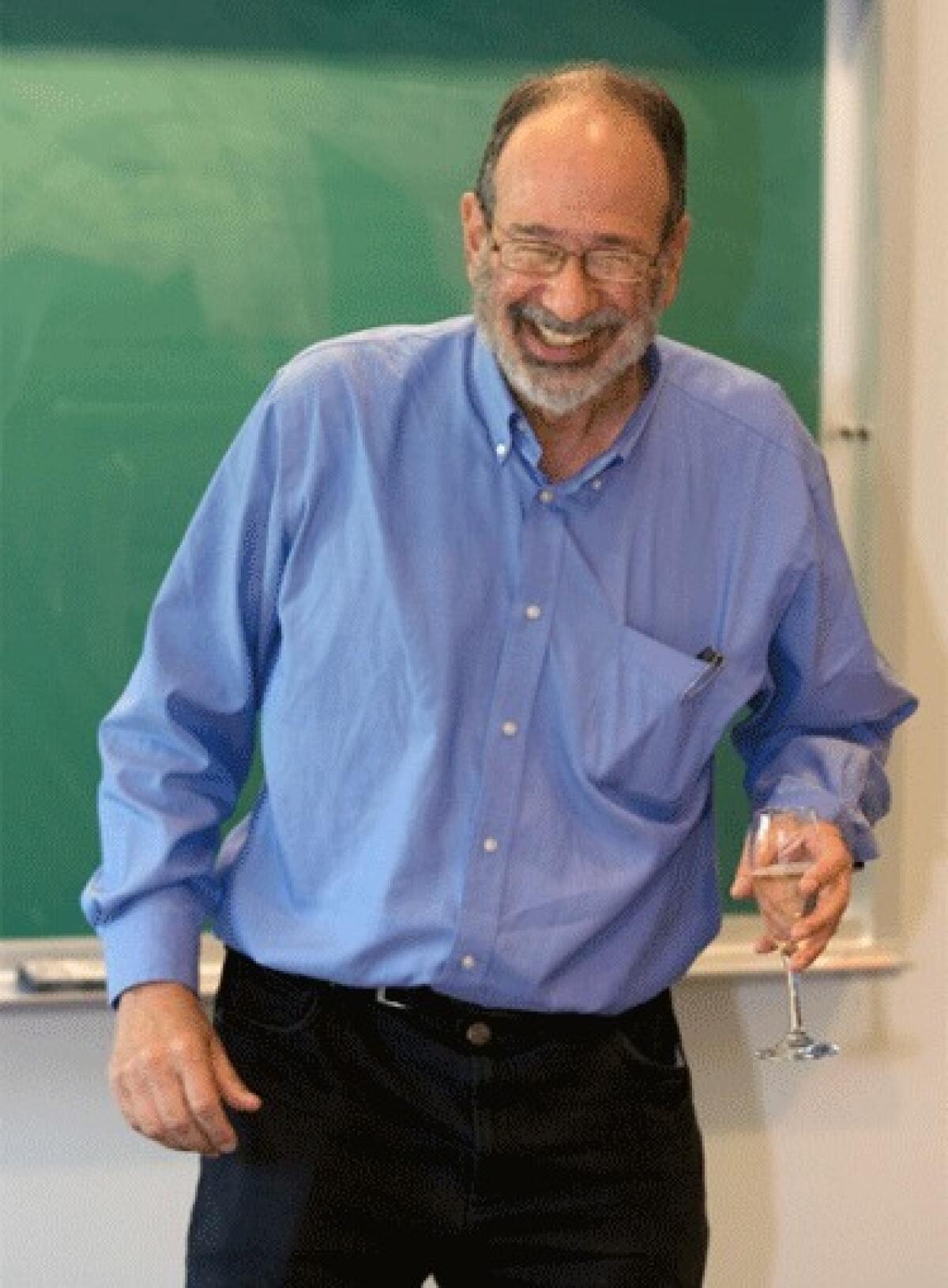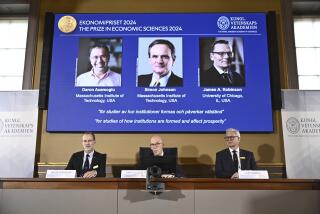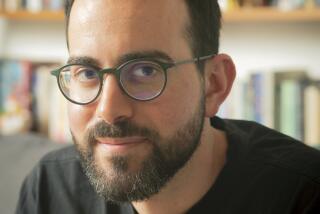Alvin Roth, Nobel matchmaker

Alvin Roth earned his 2012 Nobel Prize in economics for market design and matching theory â creating ways to pair âbuyersâ and âsellersâ happily and fairly when price isnât a primary consideration. For instance? Kidney exchanges, in which cost canât legally play a role but donors and recipients with just the right assets and needs still must find each other. Rothâs algorithms can be used to make good matches in even the thorniest situations: bringing the lovelorn together with potential mates, and bringing together the right charter and public schools with the right students.
The professor just made his own school match, leaving Harvard to return to Stanford, where he did graduate work. Roth won the Nobel at the same time as UCLAâs Lloyd Shapley, whose game theory work engaged him as a student. When the first call came from Stockholm last month, Roth slept through it; Stockholm called back.
Most economic big thinking seems so theoretical; yours has everyday applications.
Market designers try to help marketplaces work better, and we have a very broad view of whatâs a marketplace.
Your economics doesnât sound like âthe dismal scienceâ at all.
Economics is about being human. We study how people get along with each other, how they coordinate, how they compete, how they mate and match, what kind of choices they make at critical junctures. Not dismal at all. I think of economics as a form of higher gossip. These are economic questions, but theyâre also very human questions.
You based your work on calculations developed by UCLAâs Lloyd Shapley (and his coauthor David Gale).
They thought of their work as being a very abstract mathematical formula. I saw a connection between operating marketplaces and the algorithm that was in [their] 1962 paper.
Before that, was the technical term for this sort of matchmaking âa crapshootâ?
Itâs a crapshoot because money isnât what decides it precisely. Itâs not a crapshoot who drives Rolls-Royces. If you have the money and you want a Rolls-Royce, you can have one. But if you have the money and want to go to Stanford, you canât just choose to go to Stanford. You also have to be chosen. There are lots of important markets like that. You canât just choose to work for Google; you have to be hired.
These are two-sided markets, where both sides have preferences and both sides make choices. Itâs a mistake to think money doesnât play any role, but economists have for a long time focused on commodity markets where money decides everything, [where] price adjusts until supply equals demand. We try to understand the market-making process for somewhat more complicated markets than commodity markets.
You began by working out a formula for matching medical students with hospital residency programs.
Because residency programs pay a salary, money is a factor, but itâs not the essential factor. When youâre trying to get a [residency] or a place in college, when youâre trying to get a kidney, [efficient] market design depends on details. Arranging matches for kidney patients and donors is very different from arranging places in schools. We try to create a marketplace with a lot of possible transactions, that deals with the congestion of many possible transactions and that makes it safe for people to do their transactions. But itâs different each time.
The New England Organ Bank organized a kidney exchange using your ideas. There arenât many Nobel economists whose work saved lives.
Iâm a little uncomfortable with that description. We helped our surgical colleagues organize their work so they can save lives. You canât do kidney exchange without the cooperation of a lot of people.
Do you have an opinion on whether the organ market should be pecuniary?
Thatâs a big and controversial question. I know people with opinions on both sides. The shortage of transplantable organs is growing, not diminishing, even though we have great successes at using organs more efficiently and eliciting live donor organs more efficiently with kidney exchange. So Iâm at least open to the discussion.
One interesting non-money factor you consider is repugnance.
When I speak of repugnant transactions, I mean transactions some people donât want to do and other people donât want them to do. People have strong intuitions about economic transactions, and economists sometimes fail to appreciate the role these play. Itâs against the law to buy and sell kidneys. Thatâs one of the reasons theyâre such a scarce resource. I donât think thereâs a law in California against eating cockroaches, but nobody wants to eat cockroaches.
You can eat horse meat in many places around the world but hardly at all in the United States, and itâs a felony in California. The reason thereâs a law against eating horse meat isnât that nobody wants to eat it; some people do want to eat horse meat, and other people donât want them to. So economics is much more than buying and selling things. Economics is one way of looking at how we organize ourselves as human beings.
Every day, you find accounts in the newspaper where this might apply. Youâve blogged about fashion choices and the market for typewriter ribbons.
I see things like that all the time. I started a blog a couple of years ago, mostly little items in the press that just caught my eye, to show my students [that] market design is everywhere.
What drew you back to Stanford?
Many of my students are on the faculty here. Part of the lure was to come back and be their colleague. Weâre empty-nesters, and we like Stanford. We [say] it was so much fun moving to Harvard and meeting new people that we couldnât resist doing it again.
As with med students and residencies, youâve worked on placing kids in public schools and charter schools by weeding through the possible matches to get the student and school close to their top picks. Do any school districts in California use your methods, as they do in Boston, Denver and New York?
We spent some time talking to San Francisco, but that didnât come to fruition. Part of what makes school choice difficult and cumbersome is waiting lists. If we could streamline the process of getting kids the offers they want and helping them let go of the ones they donât want, that would help. And part of doing that is to integrate the charter schools and the public schools. If the charter schools are making independent offers, you can have a child with three offers. He may not decide for a while and that holds up three places where people are on waiting lists, and it makes them nervous.
Is this ultimately about fairness?
Itâs not just about fairness, but it is about fairness. Itâs also about efficiency. Itâs about equal access. We could use more best-quality schools. Itâs hard to get lots almost by definition. But even when you have scarce [best-quality] schools, schools have multiple dimensions, so the best school for my kid may be different from the best school for your kid, and wouldnât it be a shame if we put your kid in the school my kid should go to and my kid in the school your kid should go to? The efficiencies we hope to get in school choice are sorting these things out. We try to simplify the system from the userâs point of view so they donât have to game the system.
Thereâs the argument that if you just leave markets alone, theyâll correct themselves. Thatâs not the case for non-dollar-driven markets?
I would argue that itâs not the case even for exclusively dollar-driven markets. The New York Stock Exchange, the epitome of a commodity market, has got lots of rules to make trading go well. Thereâs a time of day when it opens, a time of day when it closes. Itâs got rules, and you can go to jail for violating them. Theyâre designed to give people confidence. A free market has effective institutions that allow it to work freely. Itâs not a market where there are no institutions.
Follow Patt Morrison on Twitter @pattmlatimes
This interview was edited and excerpted from a taped transcript. An archive of Morrisonâs interviews can be found at latimes.com/pattasks.







